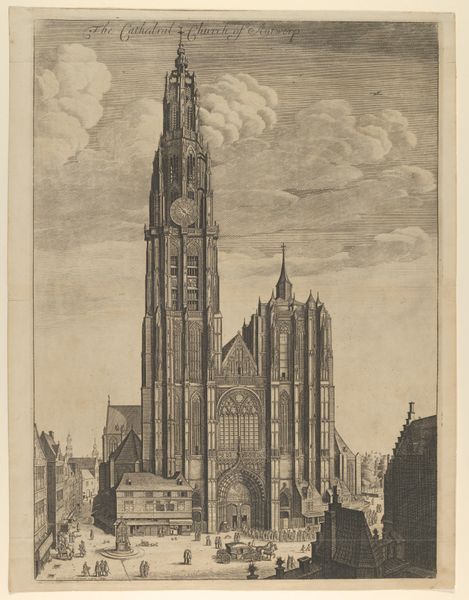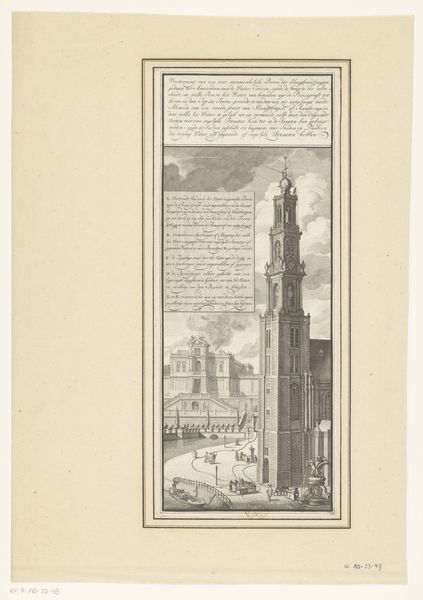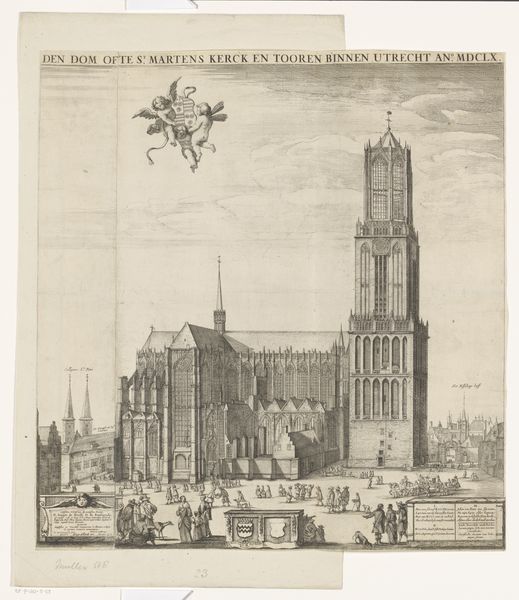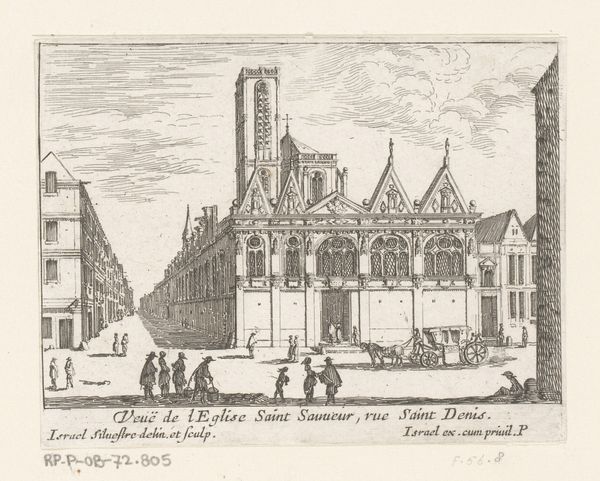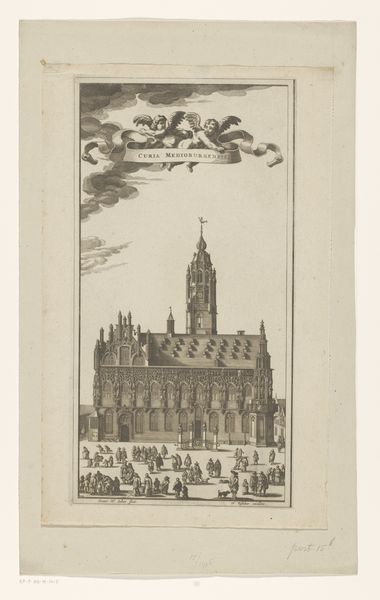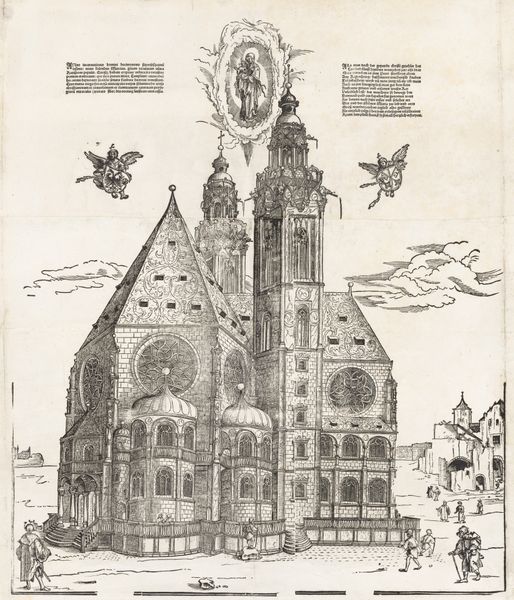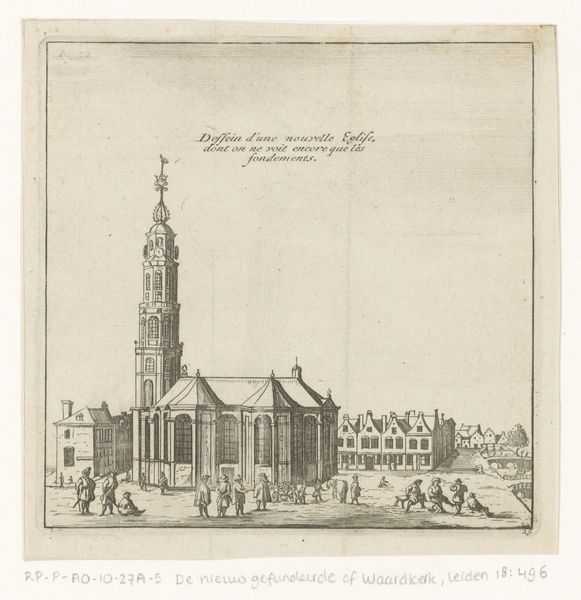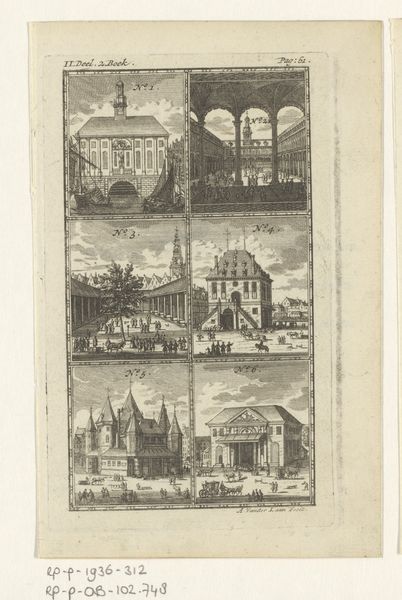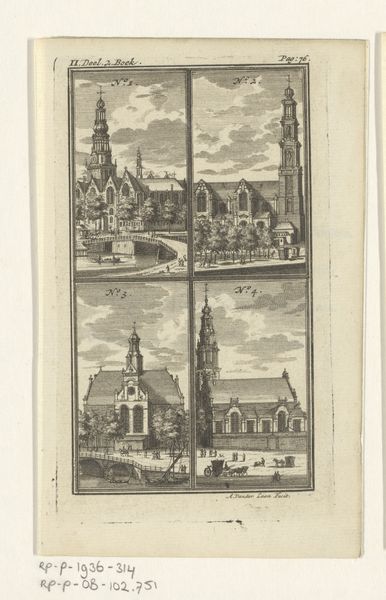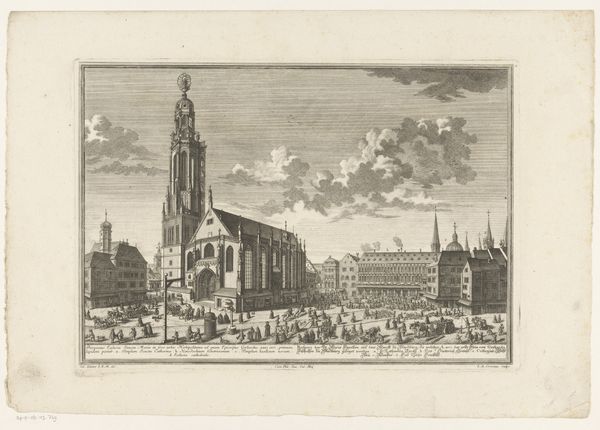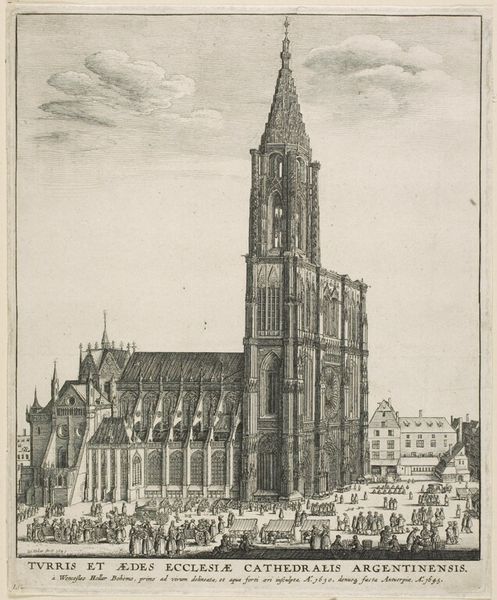
drawing, print, ink, engraving, architecture
#
drawing
#
mechanical pen drawing
# print
#
pen sketch
#
old engraving style
#
11_renaissance
#
personal sketchbook
#
ink
#
sketchwork
#
geometric
#
pen-ink sketch
#
pen work
#
sketchbook drawing
#
cityscape
#
storyboard and sketchbook work
#
northern-renaissance
#
sketchbook art
#
engraving
#
architecture
Dimensions: height 213 mm, width 154 mm
Copyright: Rijks Museum: Open Domain
Curator: My initial reaction is just… intricate. So many precise lines creating such an imposing structure. It's almost obsessive in its detail. Editor: Absolutely. This is Daniel Specklin's "Kathedraal van Straatsburg," rendered in 1587. It’s a fascinating engraving; less an architectural drawing, and more an encapsulation of the cathedral as an idea, wouldn't you say? Curator: An idea… yes, that resonates. It's as if he’s trying to capture not just the building, but the sheer ambition of it, the sky-scraping, God-reaching aspect that drove its construction. The way the lines almost vibrate gives it a feeling of restless energy. Editor: Well, remember Strasbourg Cathedral's rather tumultuous history; particularly during the Reformation when it switched between Catholic and Protestant control several times. Specklin, a military architect and urban planner, lived in a city grappling with shifting religious and political landscapes. This print then, acts as a visual assertion of civic pride—and a symbolic anchoring in a time of upheaval. Curator: That context gives the precision a new meaning, almost a form of defiance, of staking a claim. It's interesting how the text alongside the image isn’t really separate – it's presented as an equally decorative element, part of the whole architectural experience. It's like he’s trying to encompass the whole cathedral in one perfect plane. Editor: Precisely. The inscription serves as both dedication and documentation, framing the building within a religious and historical context. But think about the broader societal implications. Who had access to such imagery? Specklin was consciously constructing not just a cathedral, but a visual narrative accessible to a privileged viewership, reinforcing power structures even as religious conflicts challenged them. Curator: That's a good point. And it leads me to wonder – how much of the experience, for someone in Specklin's time, was about actually seeing the cathedral versus knowing the cathedral, seeing its image replicated and disseminated like this? We can get so caught up in whether it "looks like" the real building, but that was probably secondary. Editor: It brings up questions around representation itself—how we negotiate authenticity through artistic mediation, doesn’t it? And the fact that he produced this work relatively late in his career means that his architectural experience very much affected his choices in artistic representation. Curator: Right! Specklin is also doing a little architect-as-artist self-promotion here, letting us see into his technical proficiency. Thanks, now I see the cathedral and the commentary as completely intertwined, a complex interplay of faith, power, and artistic vision. Editor: Agreed. It really speaks volumes about the fraught socio-political climate of the late 16th century in Strasbourg and across the Alsace Region, and what its cultural symbols sought to convey about an emerging city identity.
Comments
No comments
Be the first to comment and join the conversation on the ultimate creative platform.
